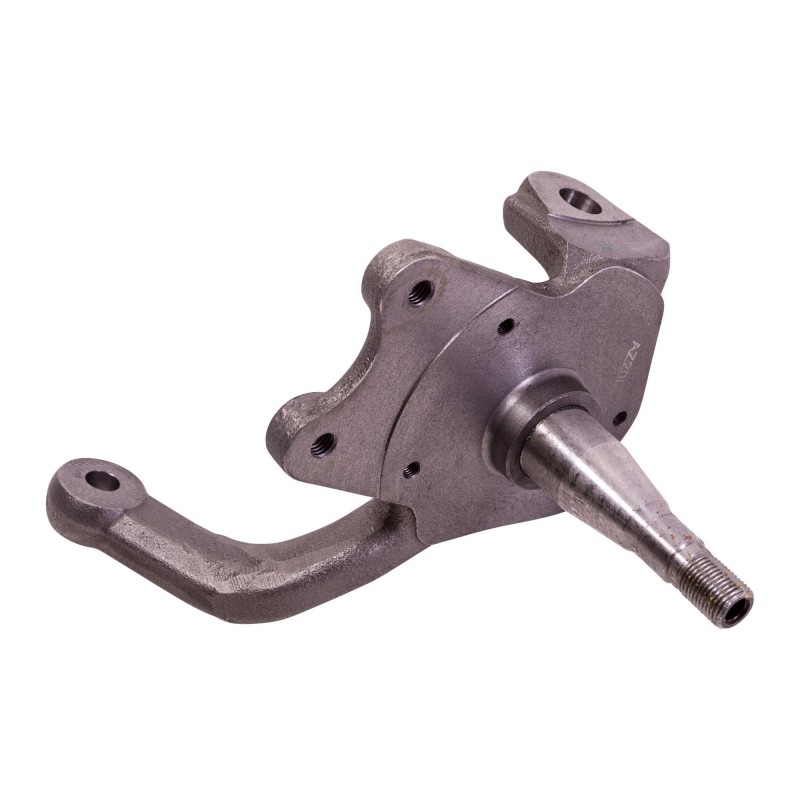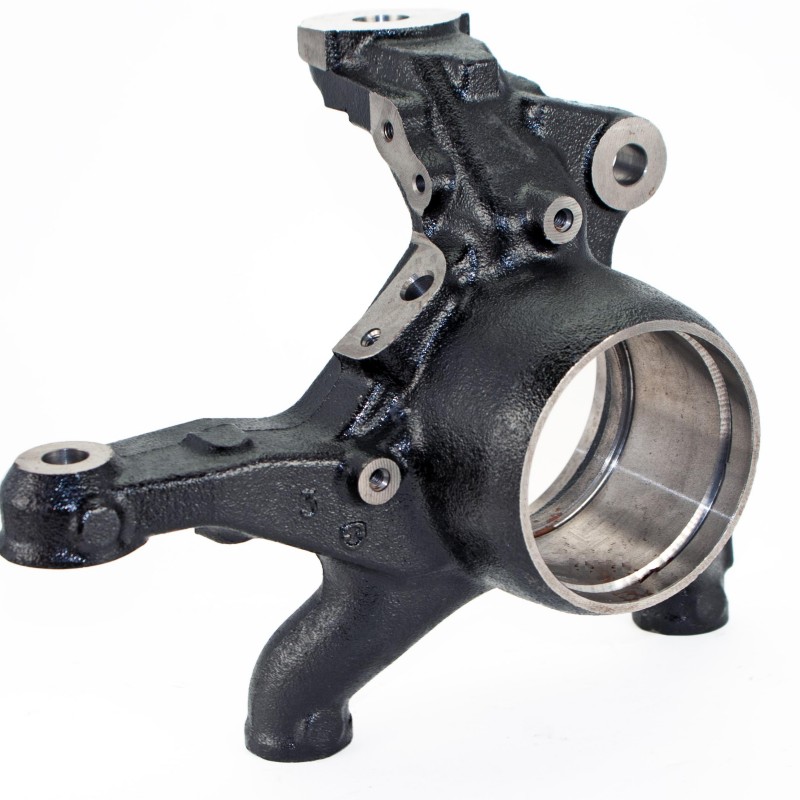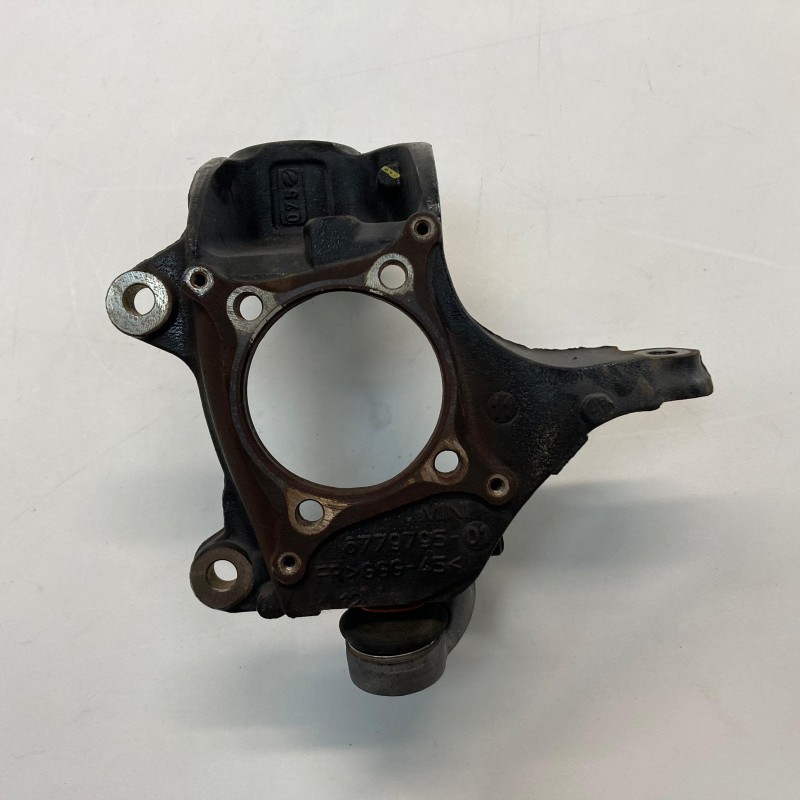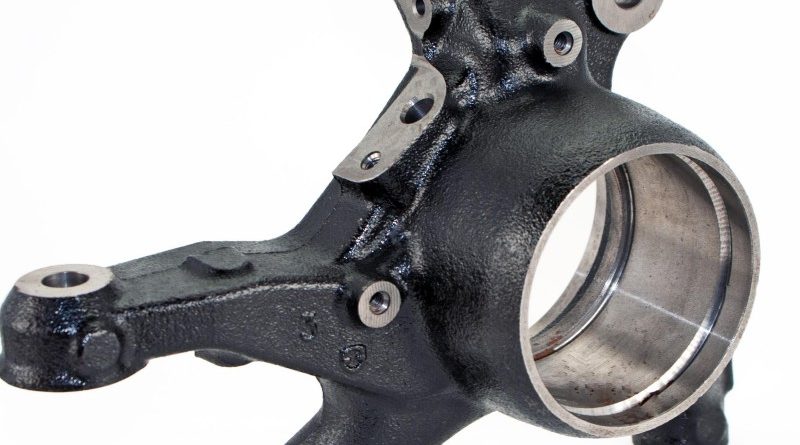Understanding What is a Steering Knuckle: A Guide
Have you ever wondered what is a steering knuckle? This crucial component of modern vehicles plays an integral role in the steering system and suspension setup. The steering knuckle connects various parts of the suspension and allows the wheels to pivot, playing a vital part in the steering and control of your car. It’s the point where multiple critical components come together, ensuring precise handling and stability. For driving to be smooth and safe, understanding this component is essential. This article will delve into everything related to the steering knuckle, including its construction, variants, functions, and tips on maintenance. We aim to equip you with thorough knowledge so that you can appreciate the complexity and importance of this seemingly simple piece in your vehicle.

The Basics of a Steering Knuckle
To grasp what is a steering knuckle, it’s crucial to understand its basic functionality and how it fits into the overall structure of the vehicle. The steering knuckle is a key part of the suspension system, typically found on both the front and rear of a vehicle, although its design and functionality may differ between the two.
The steering knuckle acts as a junction point for several components, including the wheel hub, control arms, and tie rods. In most modern vehicles, it’s primarily made from steel or aluminum, providing a robust structure that can withstand the stresses inherent in everyday driving. Its functionality is vital for allowing the wheels to turn while also supporting the vehicle’s weight.
During steering, the steering knuckle enables the wheel assembly to pivot around a vertical axis. It allows drivers to change direction effectively, translating steering wheel inputs into wheel movement. Consequently, the steering knuckle is not just crucial for steering but also for the vehicle’s stability while navigating different terrains and conditions.
Construction and Design of Steering Knuckles
Understanding what is a steering knuckle also involves examining its construction and design. The steering knuckle typically houses various components and is engineered to ensure durability and performance.
- Materials: As mentioned earlier, steering knuckles are often constructed from either steel or aluminum. Steel offers strength and resistance to deformation under stress, while aluminum is lighter and can help improve overall fuel efficiency.
- Components: A typical steering knuckle consists of several critical parts:
- Kingpin: The pivotal point that connects the knuckle to the lower control arm and allows for the wheel’s rotation.
- Ball Joints: These connect the steering knuckle to the control arms, enabling a wide range of motion for suspension and steering.
- Hub Assembly: The knuckle houses the wheel hub, where the axle connects. This assembly carries the wheel and supports vehicle weight.
- Design Variations: Depending on the vehicle type (e.g., front-wheel drive vs. rear-wheel drive), steering knuckles may differ in design. For instance, the design in sports cars might be more streamlined for enhanced performance, whereas those in SUVs may be more robust.
In summary, the construction and design of steering knuckles are fundamental for their ability to function effectively and efficiently. Each component is crafted to work together, ensuring responsive steering and stability.
Types of Steering Knuckles
Knowing what is a steering knuckle means recognizing that there are several types designed to accommodate different vehicles and driving conditions. The main types include:
- Front Steering Knuckles: Commonly found in most vehicles, these knuckles bear the majority of steering and suspension loads. They are designed to withstand heavy forces during tight turns and high-speed maneuvers.
- Rear Steering Knuckles: While less common, some vehicles feature rear steering knuckles. These components improve handling and stability, especially in high-performance or off-road vehicles.
- Alloy Knuckles: Made from lightweight aluminum alloys, these knuckles are favored in performance vehicles due to their reduced weight, which can contribute to improved handling.
- Forged Knuckles: These are made from heated metal that is shaped under pressure, resulting in a solid and resilient component. Forged steering knuckles are highly valued for their strength and durability.
Each steering knuckle type caters to specific vehicle requirements, ultimately impacting driving experience. Depending on your driving style and vehicle type, it may be beneficial to consider these variations when servicing or upgrading your vehicle.
The Role of Steering Knuckles in Vehicle Dynamics
The steering knuckle plays a vital role in vehicle dynamics, affecting how the vehicle performs on different roads and terrains. Understanding what is a steering knuckle includes recognizing its influence on various driving characteristics.
- Steering Precision: The design of the steering knuckle directly impacts steering response. A well-designed knuckle allows for quicker wheel response, contributing to a more precise steering feel.
- Load Distribution: Steering knuckles help distribute vehicle load across the suspension system. This distribution is essential for maintaining stability and control, especially under hard braking or sharp turns.
- Alignment: Proper alignment of the steering knuckle is crucial for ensuring that the wheels travel in the correct direction. Misalignment can lead to uneven tire wear, poor handling, and reduced fuel efficiency.
- Suspension Performance: The knuckle’s interaction with other suspension components affects how the vehicle handles bumps and uneven surfaces. A well-functioning steering knuckle contributes to a smoother ride and better handling performance.
Overall, the steering knuckle’s design and functionality are critical for vehicle performance. Understanding its role can help drivers appreciate the engineering complexities involved in automotive design and maintenance.
Common Problems and Symptoms Related to Steering Knuckles
Every vehicle component is prone to wear and damage, and steering knuckles are no exception. Knowing what is a steering knuckle includes being aware of the common problems associated with these crucial parts.
- Wear and Tear: Over time, the bearings and joints in a steering knuckle can wear out. This wear leads to excessive play in the steering system, causing imprecise handling.
- Corrosion: Exposure to road salt, moisture, and other environmental factors can lead to rust and corrosion, particularly in steel knuckles. This degradation compromises the structural integrity of the part.
- Noise: Unusual sounds during steering maneuvers can indicate a problem with the steering knuckle. Clunking or grinding sounds may suggest worn-out ball joints or other components linked to the knuckle.
- Vibration: Excessive vibrations felt in the steering wheel may signal an issue with the steering knuckle or connected components. This could lead to difficulties in maintaining control over the vehicle.
If you experience any of these symptoms, it is crucial to have your vehicle inspected promptly. Ignoring issues can escalate, leading to more severe problems and potentially compromising safety.

Maintenance Tips for Steering Knuckles
Proper maintenance of steering knuckles is essential to ensure their longevity and performance. Here are some useful tips to help keep your vehicle in top shape:
- Regular Inspections: Conduct routine checks on your vehicle’s steering components, including the steering knuckle. Look for signs of wear, such as cracking or excessive play in the joint.
- Lubrication: Ensure that the ball joints and other moving parts are adequately lubricated. Proper lubrication prevents wear and tear, helping to prolong the life of the knuckle.
- Alignment Checks: Regularly check the alignment of your vehicle. Correct alignment can help reduce undue stress on the steering knuckle and improve overall vehicle dynamics.
- Protect from Corrosion: If you live in an area prone to salt and moisture, take steps to protect your steering knuckles from corrosion. Washing your vehicle regularly, especially underneath, can help remove harmful substances.
- Professional Servicing: If you observe any unusual symptoms, have a professional mechanic evaluate your vehicle. Catching issues early can save you money on more extensive repairs down the road.
By following these maintenance tips, you can ensure that your steering knuckles operate efficiently and contribute positively to your vehicle’s overall performance.

Conclusion
Understanding what is a knuckle is fundamental for anyone looking to deepen their automotive knowledge. This component serves a critical role in the steering and suspension systems of vehicles, influencing handling, performance, and safety. From its construction and variations to its importance in vehicle dynamics, the steering knuckle is integral to any vehicle’s functionality.
Given its essential functions, proper maintenance and timely repairs are crucial to avoiding significant issues down the line. Drivers who understand their vehicles better, including components like the steering knuckle, are better equipped to ensure a smooth and safe driving experience. By providing this comprehensive guide, we hope to have shed light on the importance and intricacies of the steering knuckle, enriching your automotive insights and overall understanding.
